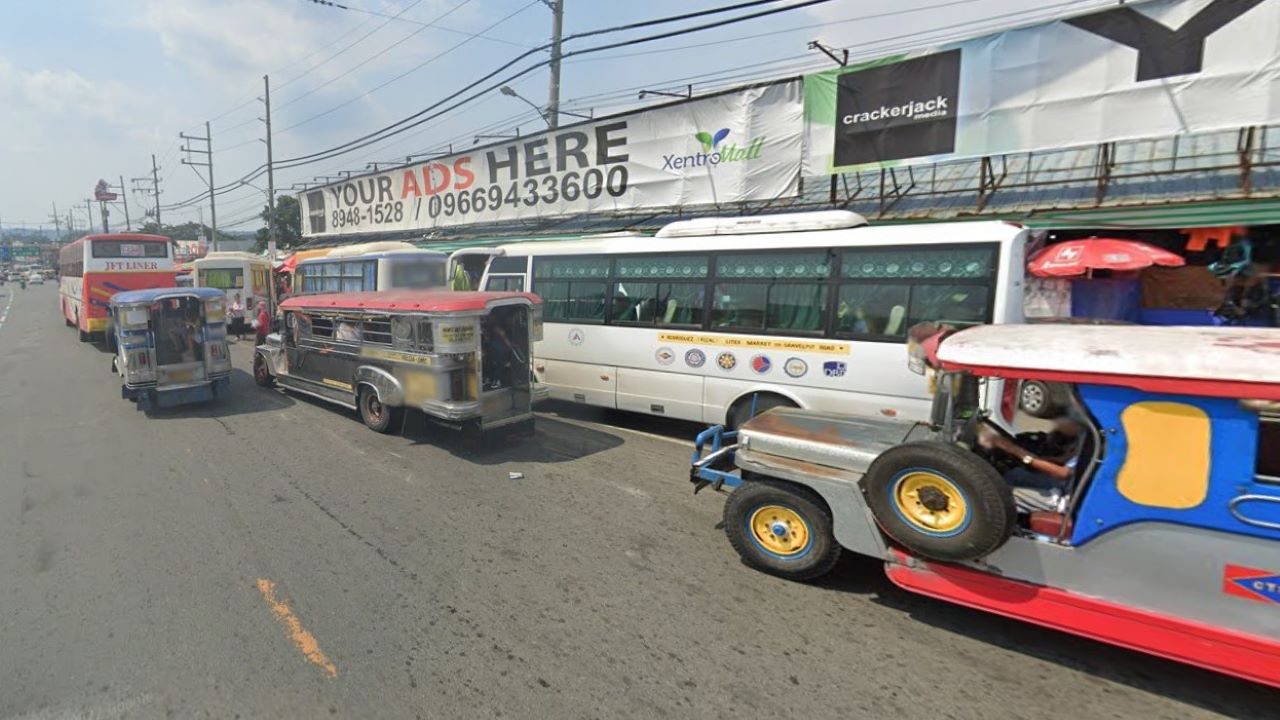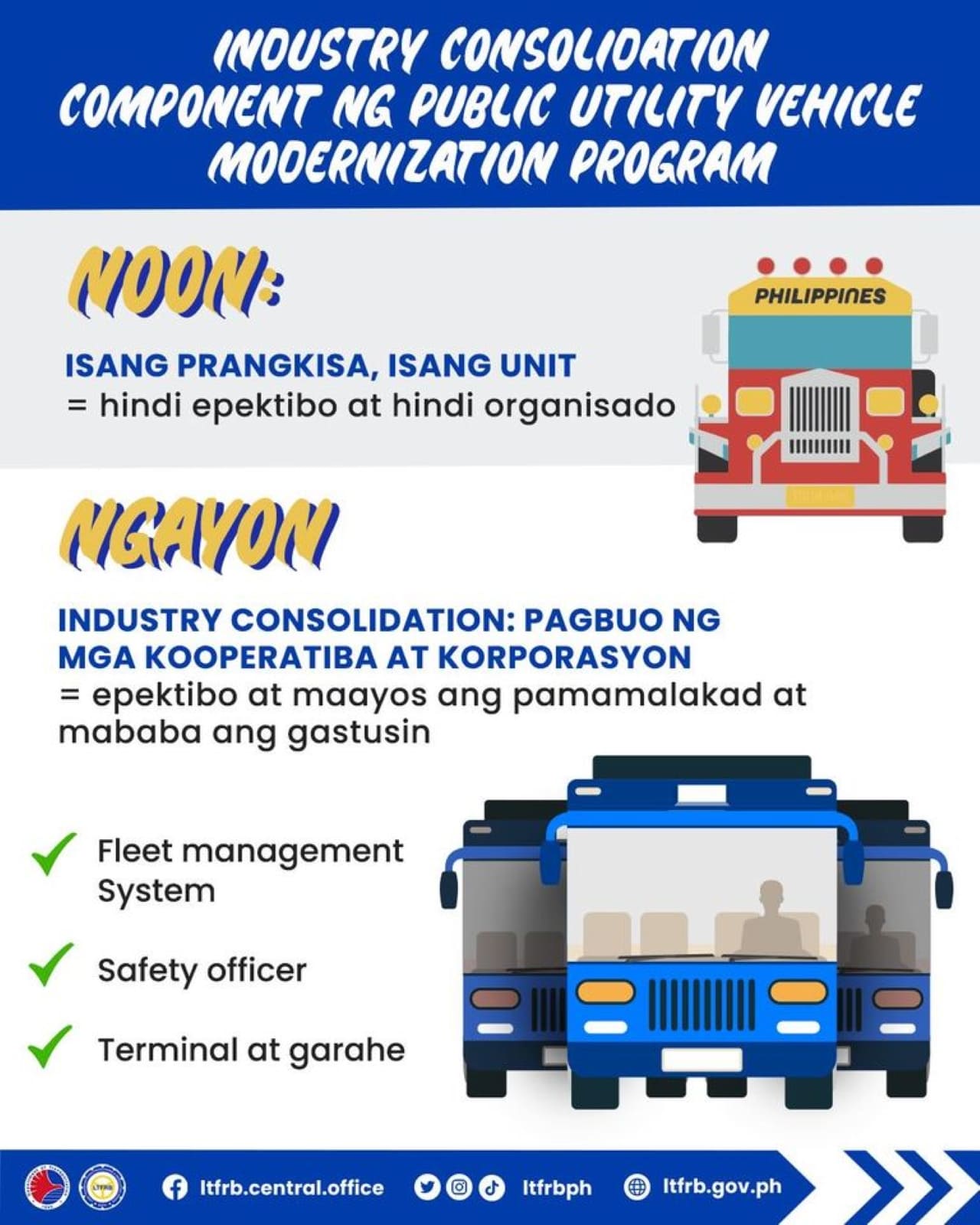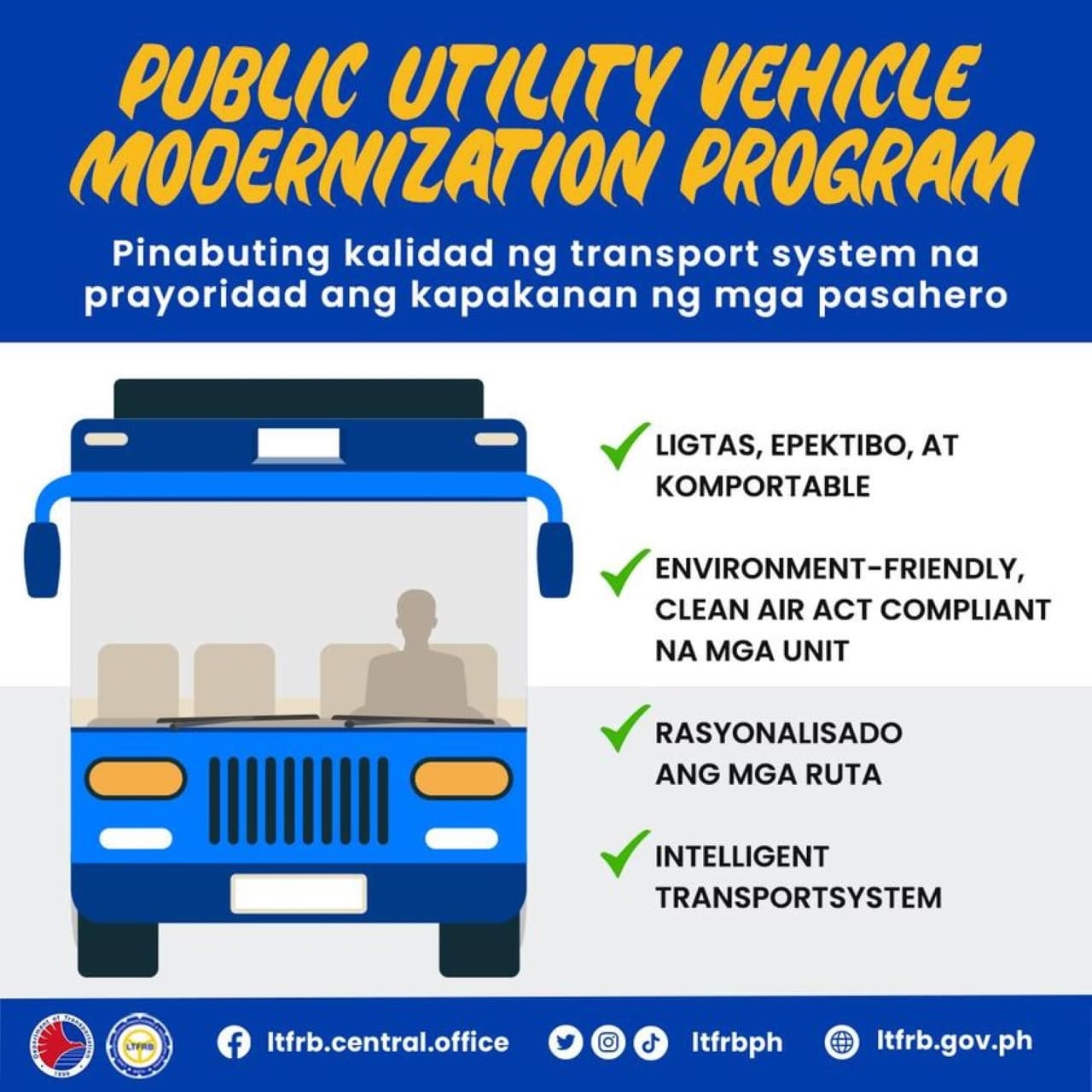
The PUVMP, or the Public Utility Vehicle Modernization Program, is no stranger to controversy and resistance. Earlier this year, transport strikes were mounted by various groups in opposition to the Program, and the DOTr and LTFRB seem to have listened. Operators and drivers have been given until December 31, 2023, to consolidate into transport cooperatives, but what exactly does that mean?
Industry Consolidation is 1 of 10 components of the PUVMP
As a primer, the PUVMP has 10 components, and these are Regulatory Reform, Local Government Unit Capacity Building, Route Rationalization, Public Utility Jeepney (PUJ) Standard Specification, Industry Consolidation, Financing PUJ Modernization, End of Useful Life Program, Pilot Implementation, Social Support Mechanism, Communication.
For the purposes of this article, we’re simply looking at the Industry Consolidation component.

Photo: LTFRB
As it stands, PUVs that ply the roads are mostly if not all owned by Operators. They have drivers who take their fleets of PUVs out on routes designated in the Franchises issued by the LTFRB and the drivers’ pay is usually a “boundary” system, paid to them by the Operators. This current system has been deemed ineffective, inefficient, and disorganized, hence the call for Consolidation.
The Industry Consolidation component of the PUVMP aims to have operators and drivers put up cooperatives. In turn, these said cooperatives will help those under its umbrella with the costs entailed in modernizing PUV fleets. Of course, the DOTr and LTFRB will be the ones at the top supporting said cooperatives.
The benefits of being included in a consolidated Cooperative? They will have a Fleet Management System to keep track of their units and “employees”, the cooperatives will have Safety Officers who will ensure that standards are met by individuals and vehicles, and the fleet vehicles will have their own terminals and garages within which to park.

Photo: LTFRB
That said, the PUVMP can get a clearer path toward the accomplishment of its other components and goals. Having consolidated groups and their Safety Officers on board will give rise to safer, cleaner, and more comfortable vehicles. The Fleet Management System will make movement more intelligent in that vehicles will be made to ply only their designated routes, and this in turn will make way for a more rationalized route/franchise system, which is one of the other 10 components of the PUVMP.

So, do you think the resistance that the DOTr and the LTFRB are getting with regard to the PUVMP is warranted? Is it truly anti-poor, is it simply pro-rich, is it what the Operators and drivers think, that it is simply another added problem for them and to their livelihood?
We’d like to hear from you, our dear readers. If you had your way, what means will you employ and how would you address the environmental and economical need for the PUVMP?


